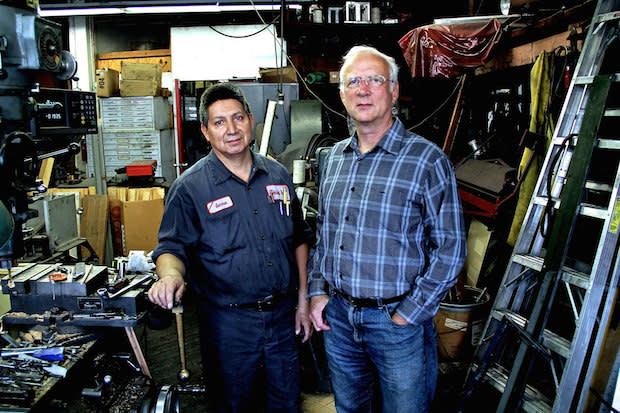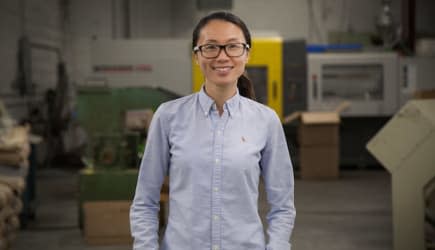These Immigrants Are Building America

All across the globe, individuals are learning their crafts. Be it in the classroom, at work or from a mentor, job skills are taught to all ages and backgrounds. For these individuals, they were all trained in different ways, but their path has taken them all to the United States.
In Spain, there are trade schools for design, painting, and jewelry-making that have been teaching people those skilled crafts since the 18th century and earlier. "You can go to a school where Picasso studied," says Nuria Royo, Brooklyn Industries' Designer and Production Coordinator for bags and accessories.
Royo grew up in Barcelona and learned jewelry-making at the same school her uncle did. "We have this long tradition of passing down the skills through these schools," she says.
In America, skilled trades are rarely taught in schools or through family anymore. Instead, they are learned on the job and from the bottom up. For Royo, combining the two training styles--one traditional, one very American--has made her understand her work in a whole new way.
Royo started her career at Brooklyn Industries working in-store, a job she says helped her understand how a bag must be designed for functionality as well as fashion. "You're always listening to customers when you are in a store," she says. "You take them very seriously. You listen to what they need. I know who we are as a company. Then I need to figure out how those two meet."

There is a simple idea behind Massachusetts' Preserve--making new stuff out of old stuff--but there's an extremely complex supply chain. Li Terry keeps it all running. Born and raised in China, Terry moved to America at 18 to attend college. She earned a bachelor's degree in economics and a master's degree in business management from the University of California at San Diego. Her roommate during graduate school was "very big on sustainability," Terry says. "Two years of that kind of environment gave me a new perspective."
But getting a job in 2008 wasn't easy, especially if you wanted one where you were going to make a difference. After working for a brand management agency in Vermont for two years, she decided it was time to find a job that was about more than making money.
Terry joined Preserve in 2011 and worked her way up from project manager to supply chain manager. One of her main duties is overseeing the company's "Gimme 5" program, which encourages its consumers--referred to as "Preservers"--to recycle their plastic and help make the very products they buy.
Preserve has installed Gimme 5 drop-off boxes at Whole Foods stores across the country, and it's up to Terry to make sure the trash dumped in those 300-plus bins end up making Preserve toothbrushes and razors.

In New Jersey, General Pencil's German Coronel is a machinist who learned his trade in Ecuador. His supervisor, Helmut Bode, is an electrical engineer trained in Germany. Bode is formally schooled while Coronel has the hands-on knowledge. Put them together and they make a dynamic team that keeps the machines running--not an easy feat, considering many of them date back to the 19th century and are not made any more.
So Coronel must build parts by hand for machines, such as the ball mill that can be heard from the street. Another is the chaser, which grinds the graphite and clay mixture down to a powder. The machines run from line shafts, which are overhead pulleys connecting the machine by leather belt to a motor.
When a machine breaks down or isn't working right, Coronel determines what parts need replacing. If Bode can't find a supplier, Coronel crafts the part himself by making an exact replica.
In some cases, Coronel creates the part and then sends it out for testing to make sure it will work on the old machines and make perfect pencils. For example, parts for the high-speed spindle that cuts the individual pencils must be balanced so that there is no vibration.
Bode, formal when he is behind his desk, comes alive on the factory floor, showing off machinery that has been coddled and cajoled to stay running.

